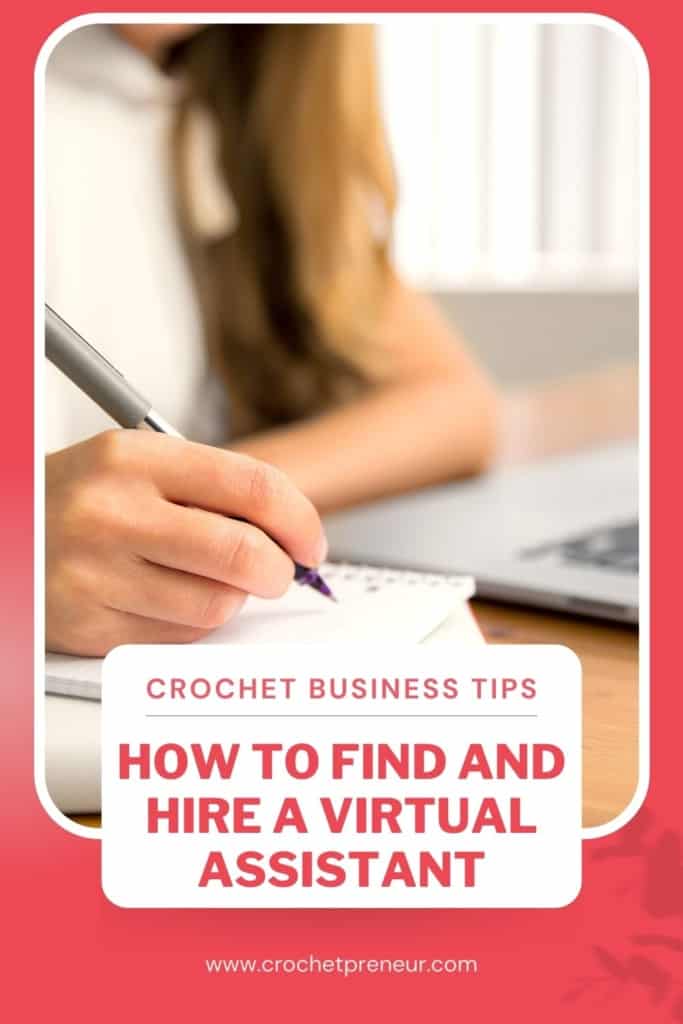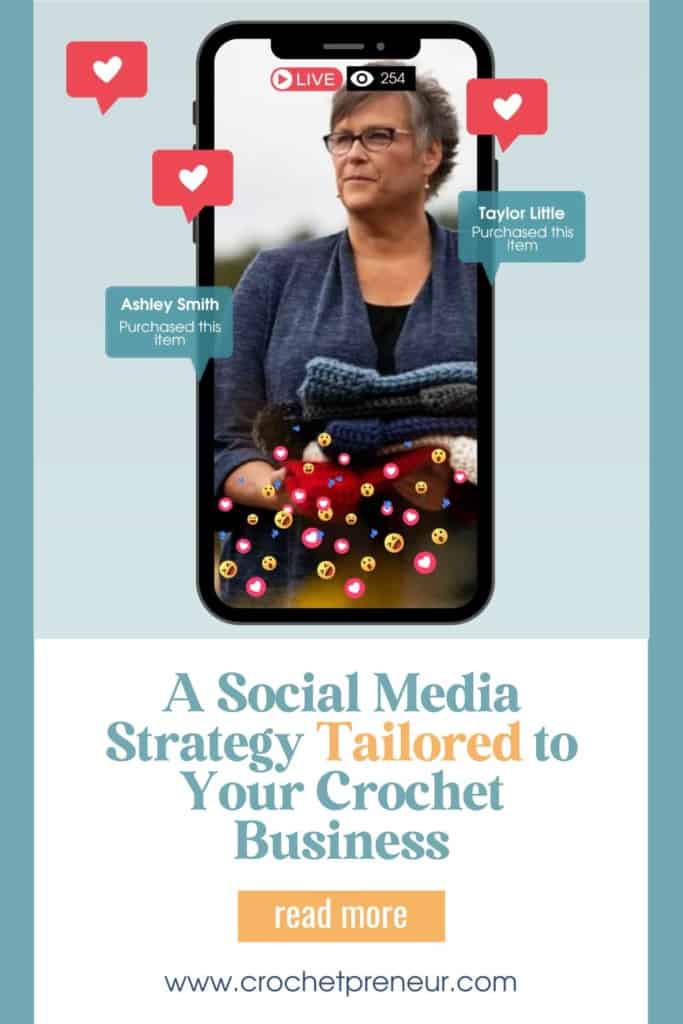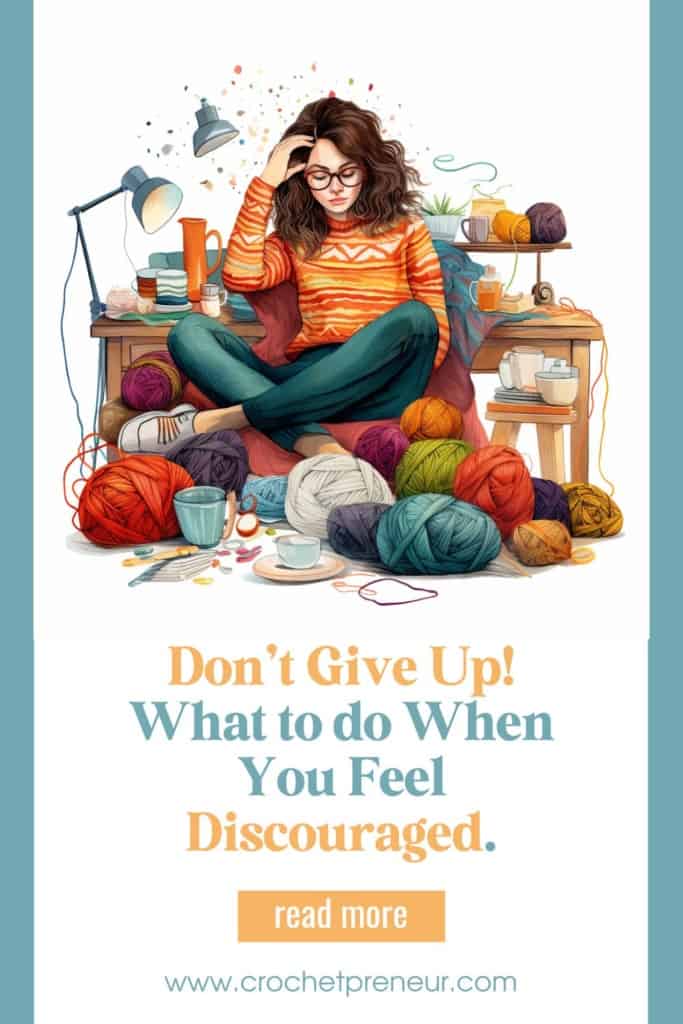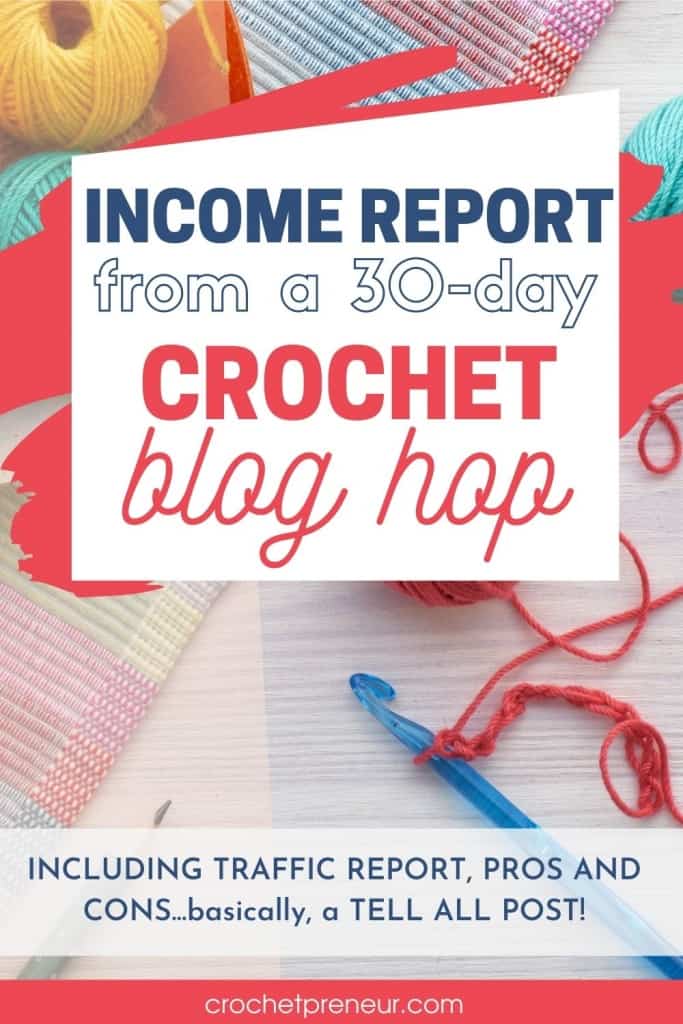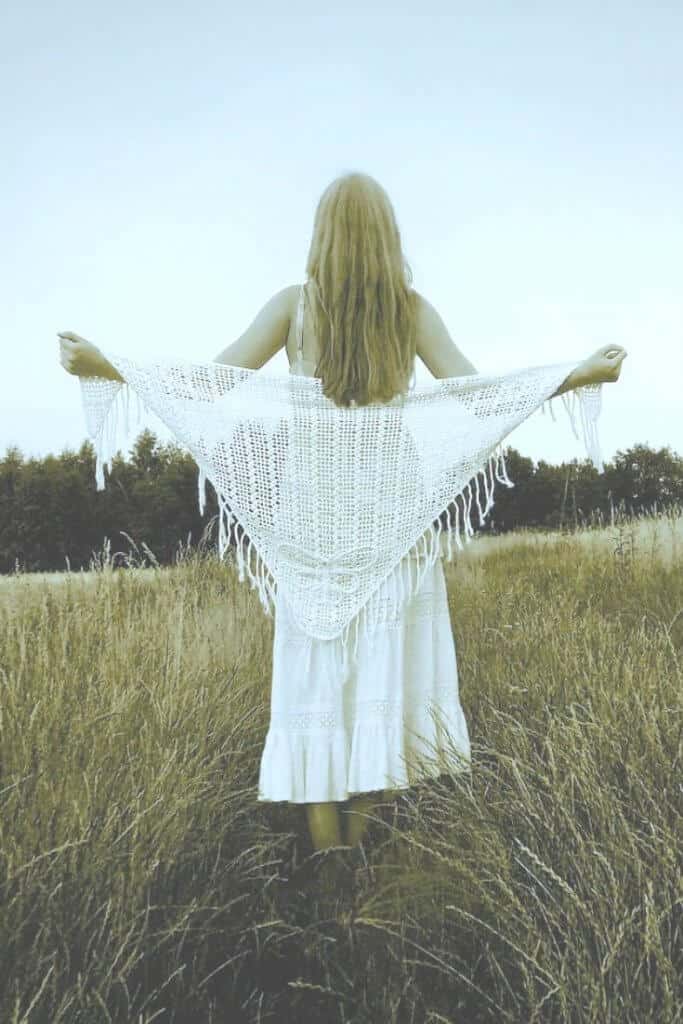Is it possible that you, as a professional crocheter or crochet designer, are breaking the law without even knowing it? Are you taking risks for your financial well-being, for your mental well-being, and for your reputational well-being, by doing some things that you may not realize are not right? In this episode, we’ll talk about crochet copyright law, your rights, how to protect them, and what to do when things go sideways.
If you want to build a thriving business, you must protect your rights. You must protect your creativity. You must protect your peace. Know your rights, protect your rights, and protect the rights of others. And if we did that, there would be a much safer place for creatives and for creative business owners.
-Pam Grice, the Crochetpreneur

The Basics of Crochet Copyright Law
Important note: This article does not constitute legal advice and is offered for informational purposes only. If you have any questions about your individual situation, please seek advice from an intellectual property attorney in your local area.
While, I’m not a lawyer, I have done some research, and I have talked to lawyers. Watch, listen, or read below and I’ll share some information that I’ve learned about crochet copyright law from these expert sources, as well as personal experience. 👇

Intro to Crochet Pattern Copyright
Can you copyright crochet patterns?
Yes! The written expression, the words of the pattern, the way you write it is copyright protected the moment you write things down. However, your idea behind the the pattern cannot be copyrighted.
What’s Protected
- Instructions, charts, schematics
- Layout and arrangement of the pattern text
What’s not protected
- The idea or concept behind the patterns
- The finished product itself
- Techniques or processes like stitches
Expressions, Not Ideas
When it comes to crochet copyright law, the expression of an idea is protected, but not the idea itself.
For example, when my bun hat went viral, I could copyright my particular pattern—the written pattern, the way that I wrote it in my words, in my sequences, in my format. I could not copyright the idea of a hat with a hole in the top for a bun to come through. That’s simply an idea that other people can and did create different versions of.
Some things to consider about crochet pattern copyright:
- Originality is key – patterns involve creative decisions like stitch combinations and textures.
- Protection begins when the pattern is written or saved in a tangible form.
- Registration adds more legal benefits, like statutory damages (we’ll get to this later).
The “30% Rule” and Other Crochet Copyright Law Myths
Recently, I saw someone very authoritatively creating content on social media saying that you can change 30% of any pattern and call it your own, and nobody can say that you infringed on their copyright. That is simply not true. So I thought I should clear up this misconception. That facts, are:
- No such rule exists in copyright law.
- Changing 30% (or any percentage) doesn’t make it legally distinct.
- Courts use the substantial similarity test:
- In other words, does the new work retain recognizable elements of the original?
For example, a designer may create a “Disney-inspired product,” changing a lot of different things. Maybe they’ll change the Mickey Mouse from having gloves to not having gloves, or from having red pants to having blue pants. But there are certain elements that you look at it and you know it’s Mickey Mouse, particularly the round ears, the head shape.
If someone can look at it and say, “Oh, that’s Mickey Mouse. Some things have changed but it’s still Mickey Mouse—” if they recognize that it is still that character—then it is still covered by copyright.
When you’re creating a design, ask yourself, “Does this new work retain recognizable elements of the original?” If it does, you’re taking a huge risk and I recommend you don’t do that.
Copyright vs. Processes and Techniques
Let’s say I took someone’s sweater pattern. They were using the moss stitch and I switched it up to the lemon peel stitch and republished it and called it mine. There may be cause for that person to come after me if that reworked pattern retains features of the original design—and it likely will.
So what is a derivative work? And what constitutes infringement?
What is a derivative work?
This is not a an opinion. If you create a derivative work and it can be traced back to the original—if someone can say, “Wow, this looks an awful lot like that person’s thing. I can see that it was created as a derivation of that person’s design,” you are putting yourself at risk.
Derivative Works: Limits of Protection
- Crochet techniques (e.g. slip stitches, chains) are not protected
- Functional, finished items (e.g. scarves, bags) are not covered
- Only the written pattern itself is protected
💡 If you sell crochet items, check out this post to learn about the legalities of selling products made from someone else’s pattern.
Defamation and Business Interference Risks
Some people think, “It’s all right. I don’t know how to how to create a pattern on my own, so I’ll use someone else’s as a basis for what I’m going to do. And I’ll change enough of it that they can’t come after me.” They’re willing to take that risk. But sometimes they don’t understand what what that risk entails.
Before you decide to take that risk, I just want to talk about what you might be facing if you do make those decisions. Modifying someone’s pattern, whether to sell or to share for free, without permission may result in:
- Cease and desist letters
- DMCA takedown requests
- Lawsuits for damages of between $750 and $30,000 with awards of up to $150,000 for willful infringement.
- Unwanted social reputational fallout (see below).
What Fallout?
An unprofessional or immature response to someone asserting their rights may snowball, creating unwanted legal consequences. Steer clear of the following:
- Defamation: Sharing false, harmful information about a designer.
- Tortious interference: Encouraging others to avoid buying from a designer.
- Both can lead to financial loss and legal action.
Ultimately, when you start interfering with people’s ability to run a business, you’re getting into really, really dangerous territory. It’s just not worth it.
Steps to Protect Your Work
Respect others’ intellectual property.
Just because you don’t like something or just because you feel like what you’re doing isn’t wrong, doesn’t mean you’re right about that. So do the research
Avoid using or sharing others’ work without permission.
If permission has not been given, don’t share other people’s stuff. Don’t change it. Don’t create derivative works. Go create your own things. This includes crochet patterns, as well as product photos, that you might use in pattern roundups, etc.
On the plus side, derivative works can sometimes create collaboration opportunities. Some people might even create a design and say, “Hey, take this and make it your own and change it up. Then we’ll all share all these different variations.” In that way, you have permission to create a derivative work and share it with people. Just ask permission first!
Consult a lawyer for disputes or unclear situations.
If one person is telling you, “She can’t tell you to take that down. She doesn’t have that right,” and another person says, “Well, I don’t know. I think I heard somewhere that maybe they do have that right,” I would err on the side of caution.
Ultimately, don’t just believe everything you hear on the internet. Go talk to someone who knows the answer for real before taking a risk, unnecessarily.
How to Register a Crochet Pattern Copyright
Why and how should you register your copyright for your crochet pattern? Simply, registering a copyright strengthens your rights and allows you to sue for statutory damages if someone infringes upon your rights. You’ll also receive some international protection for limited countries in the Berne Convention.
Go online
Visit copyright.gov.
Pay the fee
Fees for copyright registration start at $65.
Upload your pattern
Fill out the form and submit your pattern (or collection of patterns).
This applies to designers in the US. If you’re not in the US, this may be different so familiarize yourself with the laws in your country.
Practical Actions for When Things Go Wrong
I know multiple designers that have had people get online and start bullying them, start talking about them in front of their face behind their back, on social media, taking conversations out of context, reinterpreting conversations to make themselves look like the victim—all sorts of things.
The great thing about being a coach is that I get to see behind the scenes of what’s really happening and to know exactly what’s really happening, which is helpful. But just know that infringement of crochet copyright law does happen. When you encounter it, here’s are some steps you can take to protect yourself.
If someone has infringed on your rights
- Document the infringement. Keep screenshots, notes with dates, and copies of all communications. Download any vidoes in question in case they are removed.
- Send a polite but firm cease-and-desist letter.
- File a DMCA takedown request on applicable platforms.
- Protect your peace. Don’t be afraid to block people—and don’t be the type of person that has to be blocked
- Consult a lawyer if necessary.
If you’ve been confronted about possible infringement
- Document what happened.
- Do your research.
- Respond professionally.
- I recommend taking down the content in question until you know you’re in the clear.
- Consult a lawyer.
💡 Do you suspect someone has infringed on your rights? Read more about what to do if someone has stolen your design.
What Not to Do
- Don’t lash out publicly.
- Don’t ignore the issue.
- Don’t make legal threats without merit.
- Don’t engage in heated exchange.
- Don’t make up stuff in order to bolster your position.
- Don’t play the victim to rally sympathy/support (or social media engagement).
- Don’t infringe in retaliation.
- Don’t assume intentions.
- Don’t go it alone, get legal help.
- Don’t engage in cancel culture or bullying.
The Biggest Consideration
When dealing with any infringement of crochet copyright law, whether you’re being infringed upon or accused on infringing on someone else, always consider this:
- Who do you want to be?
- Even if it is legal, where are your ethical boundaries?
- It’s important to ask, might someone be wrongfully hurt by my choices?
Who do you want to be in the crochet community? Do you want to be the person who cancels other people, rallies negativity in the community, stirs up trouble, or preys on the struggles of others? Or do you want to be the person who is a peacemaker, someone who is kind, someone who sees other people as having value and not as tools for to get engagement on your account?
Decide who you want to be and act accordingly.
How Crochet Copyright Law Protects Creativity
Protecting creativity is critical to building a thriving business. Some people call it gatekeeping. You know why? Because they want to know what you know and they don’t want to pay you for it. So they want to shame you into giving them what you know for free. That is devaluing.
I don’t like the word gatekeeping. You’re allowed to protect your creativity. So if you want to build a thriving business, you must protect your rights. You must protect your creativity. You must protect your peace. Know your rights, protect your rights, and protect the rights of others. And if we did that, there would be a much safer place for creatives and for creative business owners.






